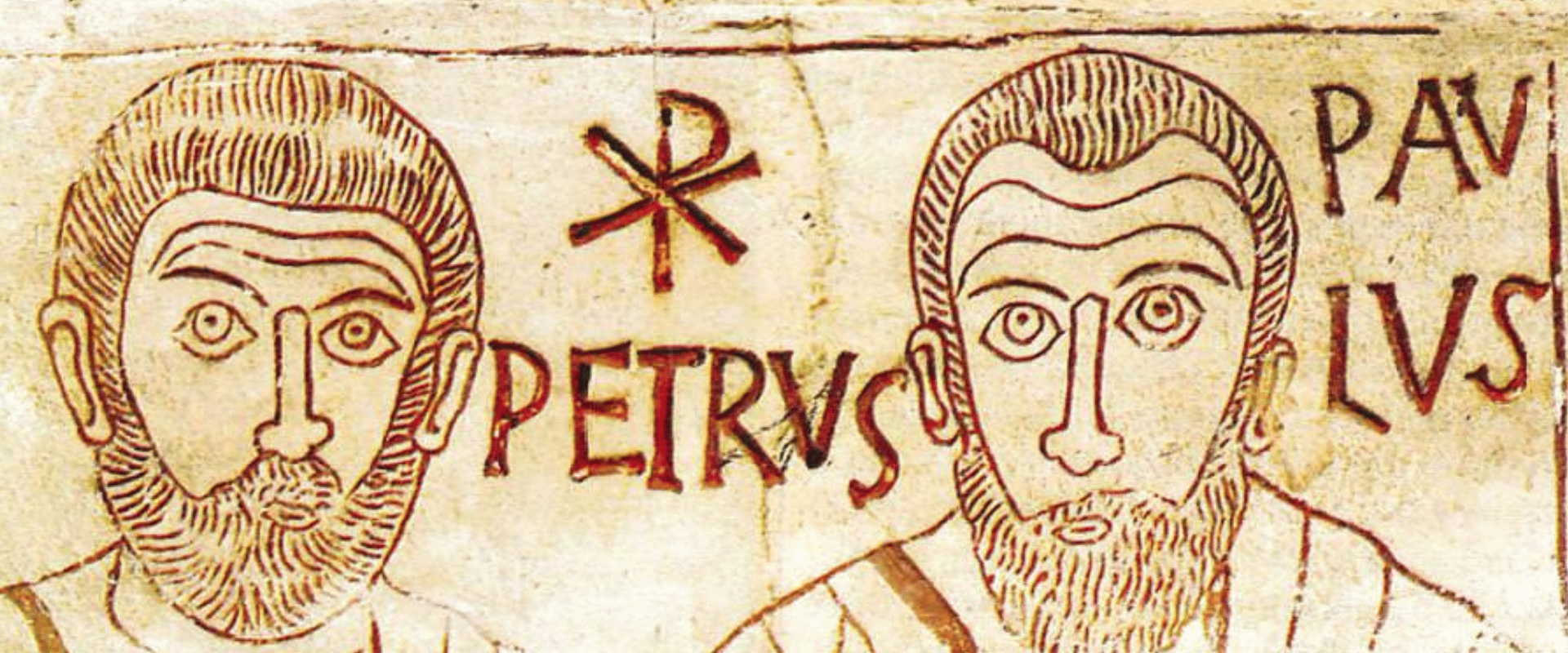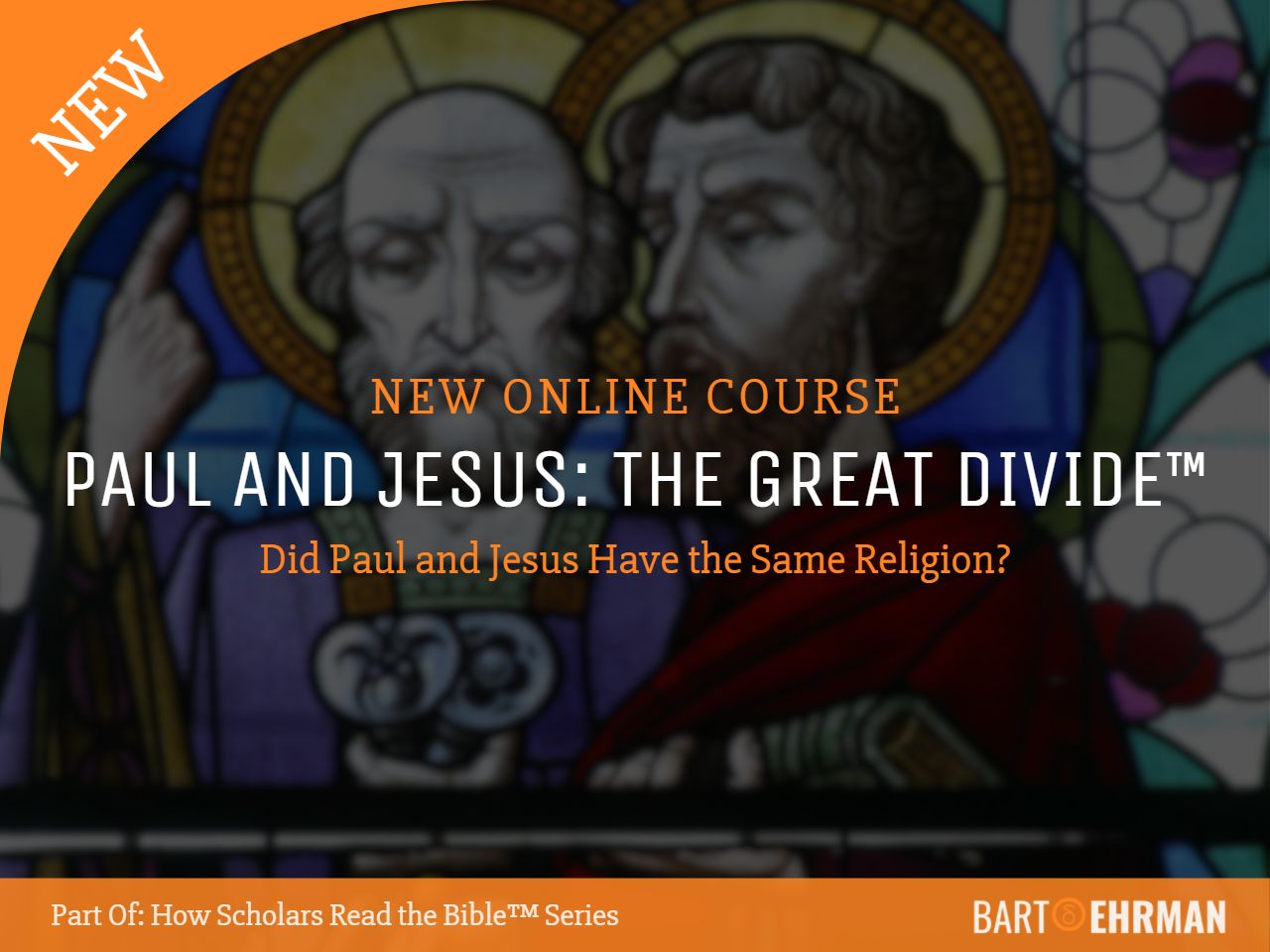What Books Did Paul Write in the Bible?The Surprising Truth!

Written by Marko Marina, Ph.D.
Author | Historian
Author | Historian | BE Contributor
Verified! See our guidelines
Verified! See our editorial guidelines
Date written: August 30th, 2023
Disclaimer: The views and opinions expressed in this article belong to the author and do not necessarily match my own. - Dr. Bart D. Ehrman
What books did Paul write in the Bible? This question leads to a fascinating exploration of Christian origins. The Pauline Epistles, a collection of letters by the apostle Paul, have made an indelible impact.
However, as we venture into his world, we must also grapple with a scholarly debate that lingers—a debate about authorship.
While some letters are undisputedly Paul’s, others bear his name but, according to most scholars, aren’t written by him.

The Authentic Letters of Paul
Thirteen letters in the New Testament claim to have been written by Paul. However, most critical scholars agree that Paul wrote seven:
- Romans
- 1 Corinthians
- Galatians
- Philippians
- 1 Thessalonians
- Philemon
The six disputed letters fall into two groups of three – as depicted in the table below.
Pastoral Epistles | Deutero-Pauline Epistles |
|---|---|
1 Timothy | 2 Thessalonians |
2 Timothy | Colossians |
Titus | Ephesians |
How Many Books of the Bible Did Paul Write? Critical Historians & and the Authorship of Pastoral Epistles
Most critical historians open to the possibility of forged letters in the New Testament do not believe Paul wrote the Pastoral Epistles – 1 & 2 Timothy and Titus. Most conclude, these three letters were written well after Paul’s death.
Gerald L. Bray notes in his Commentary on Pastoral Epistles that the “prevailing scholarly consensus is to reject their Pauline origin and to assign them to a post-apostolic source.”
What about the Deutero-Pauline epistles? 2 Thessalonians, Colossians, and Ephesians are called disputed epistles because they have a secondary standing in the Pauline corpus. Compared to Pastoral epistles, they are closer to genuine letters and probably date back to the late 1st century CE.
However, only a minority of critical scholars believe Paul probably wrote one or more of these letters. Of these, a significant minority think Paul wrote 2 Thessalonians, a smaller group says that about Colossians, and an even smaller number supports the Pauline authorship of Ephesians.
Regarding the 2 Thessalonians, Udo Schnelle notes in Einleitung in das Neue Testament that scholars since the 19th century doubted its authenticity.
So, how many books did Paul write in the Bible? Of the thirteen letters attributed to him, the scholarly consensus is that Paul wrote seven. Others were written by people who purposely presented themselves as Paul after he died.
But how can that be? Am I suggesting that there are forgeries in the New Testament?
Pseudonymity or Forgery: Non-Pauline Letters
The term pseudonym means “false name”. Pseudonymous writing is when an author writes under a name that is not their own, often using a pen name. For example, Mary Ann Evans wrote her novels under the name George Eliot.
However, in other instances, a pseudonym implies a deliberate act of deception. Namely, the author claims to be a well-known person who did not write the book in question. In those cases, we are dealing with a form of pseudonymity called pseudepigraphy.
During my college years, our professors accepted the mainstream opinion regarding the authorship of the Pauline epistles.
They justify this by asserting pseudepigraphy was a morally acceptable practice in the ancient world, citing instances from ancient philosophical schools where students respectfully attribute their works to their teachers as a token of appreciation and respect.
To be candid, I never considered challenging this theory, as I assumed their expertise was unquestionable. However, years later, I realized just how mistaken I was. Two riveting and remarkable studies completely shifted my perspective.
Forgeries in Antiquity: A Form of Deceit or a Moraly Accepted Category?
As noted by Speyer and Ehrman, the ancient world witnessed numerous instances of pseudepigraphy. However, the practice was widely condemned as morally unacceptable in each case. This perspective is evident even at the level of etymology.
The two most common terms used to describe this phenomenon were ψεῦδος and νόθος. First, it means “lie” or “deceit.” The forged writings in antiquity were commonly called ψευδεπίγραφα which means “writings that are inscribed with a lie.”
The second term (νόθος) refers to a child born out of wedlock, and it carries with it all the negative connotations of the modern term bastard. In other words, the work labeled as νόθος is illegitimate because it does not belong to the person who is named as its author.
In his article “Literary Forgeries and Canonical Pseudepigrapha,” Bruce Metzger notes the famous example of a Roman philosopher and physician, Galen (2nd century CE). Galen discovered that a work had been written under his name. Being disturbed by this, he dedicated an entire book to enlightening readers about how to distinguish between his genuine works and ones that had been forged.
Thus, Bart concludes: “The term forgery is no more derogatory than the ancient terms used to describe the same phenomenon.” In other words, ancient writers considered pseudepigraphy a form of lying or deceit.
Evidence Is Important
Regarding the ancient philosophical schools, it becomes evident that there exists no concrete evidence supporting the widespread practice of students attributing their teachers’ names as authors out of respect and gratitude.
Pinpointing the exact origin of this theory proves challenging, yet Dr. Bart Ehrman meticulously demonstrates a substantial absence of evidence within the primary sources.
What books did Paul write in the Bible? This question inevitably leads us to conclude that several of Paul’s letters in the New Testament are forged.
How do Scholars Recognize Pauline Forgeries in the New Testament?
Historians decide that a letter is probably forged on two general grounds:
- First, whether the style and vocabulary match those of the genuine letters.
- Second, whether the content resembles the genuine letters.
I can’t say much about the first point because it requires meticulous study of the original Greek, which is beyond the scope of this article. However, I can give you a simple example related to Ephesians.
Did You Know?
The Letter to the Ephesians contains six chapters, nine sentences exceeding 50 words each. However, Paul only wrote nine such sentences in all his authentic letters. In other words, the style in Ephesians is not how Paul wrote.
Content is much easier to see than style and vocabulary. Looking at 1 and 2 Thessalonians, we quickly discover substantial differences in content. Take, for instance, ideas about the end of the current world order.
In 1 Thessalonians, Paul says the end is coming soon. There is no way you can tell precisely when; therefore, believers should always be ready. However, in 2 Thessalonians, the author claims the end is not imminent.
Furthermore, he claims there will be signs that the end is approaching. Consequently, Christians should concentrate on living ethically and working quietly to support themselves.
Of course, other stylistic and vocabulary issues indicate that the author of the 2 Thessalonians is not the apostle Paul.
If you want to know more about it, read Bart’s excellent book “Forgery and Counterforgery”!

Setting the Chronology: Paul’s Life and Work
The apostle Paul, also known as Saul of Tarsus, a prominent figure in early Christianity, was probably born between 5 BCE and 5 C.E.
Paul’s exact date of death is not definitively recorded in historical documents. Still, most scholars believe he died in Rome between 60 and 68 C.E. Later, Church tradition claimed he was martyred under the emperor Nero. However, there is no way to confirm this.
Paul’s letters were written over several years as he carried out his missionary journeys and communicated with the early Christian communities he established. The dates of the epistles vary, but they were composed between approximately 50 and 64 C.E.
The last book of the Bible written by Paul was the Epistle to Romans, composed around 60 C.E., as Dr. Bart Ehrman notes in a blog post on Paul’s chronology.
Uncovering Authorship: Summing Up Conclusions
What books did Paul write in the Bible? In exploring the Pauline Epistles, we’ve ventured beyond the surface, uncovering the complex landscape of authorship and authenticity.
We discovered that while the apostle Paul undeniably authored several of the letters attributed to him, a critical eye reveals that the landscape is not without doubt. Six of the thirteen letters attributed to him display the hallmarks of different authorship – a testament to the intricate world of ancient forgery.
To gain more insight into the nuanced discourse surrounding Paul’s impact on the nascent Christian faith, I encourage you to embark on a fascinating journey with Dr. Bart Ehrman in his course “Paul and Jesus: The Great Divide.”
This course explores the differences between the historical Jesus and Paul, examining their unique perspectives and contributions.It is an opportunity you don’t want to miss! Click the link below.

